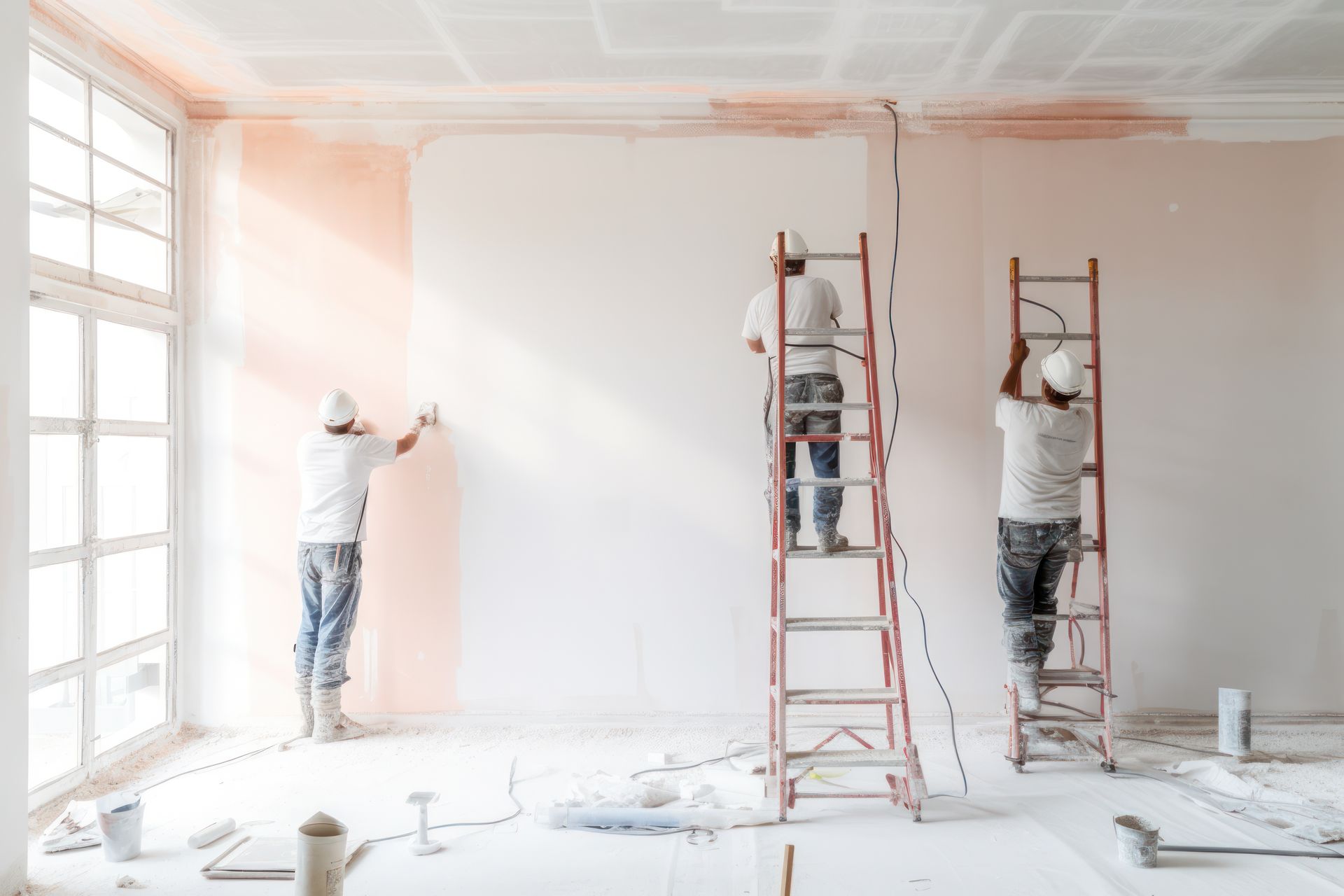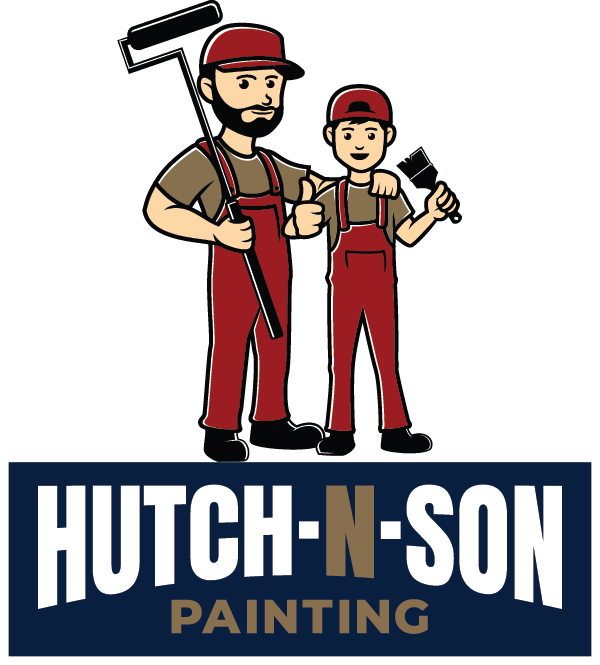Texas summers present unique challenges for homeowners throughout the Dallas-Fort Worth area, with scorching temperatures, intense humidity fluctuations, and aggressive air conditioning cycles creating the perfect storm of conditions that can wreak havoc on interior paint surfaces. While most homeowners expect exterior paint to face weather-related challenges, many are surprised to discover that interior paint cracking often becomes most pronounced during the hottest months of the year when indoor climate control systems work overtime to maintain comfortable living conditions. Understanding why interior paint develops cracks during summer months—and more importantly, how to prevent and address these issues—can save Plano, McKinney, and Frisco homeowners significant frustration and expense while maintaining the beautiful interior spaces that make Texas homes comfortable retreats from the relentless summer heat.
The science behind summer paint cracking involves complex interactions between temperature fluctuations, humidity changes, substrate movement, and the physical properties of paint films that many homeowners never consider when admiring their freshly painted walls during mild spring weather. Paint essentially functions as a flexible membrane designed to expand and contract with the surfaces it covers, but extreme conditions can push these materials beyond their elastic limits, causing the film to crack, split, or separate from the substrate underneath. During Texas summers, interior walls experience dramatic temperature swings as air conditioning systems cycle on and off, outdoor heat radiates through building materials, and humidity levels fluctuate wildly between the dry conditions created by cooling systems and the moisture introduced when doors open to the humid exterior environment.
Temperature differential stress represents one of the primary culprits behind summer paint cracking, particularly in homes where aggressive air conditioning creates significant temperature variations between interior and exterior wall surfaces. When the outside temperature soars above 100 degrees while indoor thermostats maintain 72-degree comfort levels, the temperature differential across wall assemblies can exceed 30 degrees, causing building materials to expand and contract at different rates. Drywall, wood framing, and exterior sheathing all respond differently to these temperature changes, creating internal stresses that can cause paint films to crack along stress concentration points such as joints, corners, and areas where different materials meet. This phenomenon becomes particularly pronounced in newer homes where building materials haven't had time to fully acclimate and stabilize, though older homes with aged paint systems can prove equally vulnerable when existing films have lost their elasticity over time.
Humidity fluctuations during Texas summers create additional stress on interior paint systems through the constant moisture absorption and release cycles that cause substrate materials to swell and shrink repeatedly throughout each day. Air conditioning systems remove moisture from indoor air, creating artificially dry conditions that can cause wooden substrates to shrink and pull away from paint films. However, when humidity spikes during afternoon thunderstorms or when exterior doors open frequently, rapid moisture absorption can cause these same materials to swell quickly, stressing paint films that may have become brittle during dry periods. This constant expansion and contraction cycle proves particularly damaging to paint films that were applied during cooler months when materials were in different dimensional states, creating mismatches between substrate size and paint film capacity that manifest as cracking when summer conditions arrive.
Air conditioning system effects on interior paint extend beyond simple temperature and humidity control to encompass the mechanical stress created by rapid air movement, pressure differentials, and the dramatic environmental changes that occur when systems cycle on and off throughout the day. Central air systems create positive and negative pressure zones within homes that can cause walls to flex slightly, particularly in homes with large open floor plans where air pressure changes can affect entire wall assemblies simultaneously. Additionally, the rapid temperature changes that occur when cold air from vents hits warm wall surfaces can create localized thermal shock that proves particularly damaging to paint films that have lost flexibility due to age or poor quality formulations. Homes with insufficient insulation or air sealing often experience the most severe paint cracking because temperature and humidity fluctuations penetrate deeper into wall assemblies, affecting paint adhesion and substrate stability.
Substrate movement during summer months affects paint integrity through the natural expansion and contraction of building materials responding to temperature and humidity changes, with different materials moving at different rates and creating internal stresses that paint films must accommodate or risk failure. Wood components including framing lumber, trim, and cabinets expand and contract significantly with moisture changes, often pulling away from adjacent materials and creating gaps that stress paint films beyond their elastic capacity. Drywall responds more slowly to environmental changes than wood but can develop internal stresses as moisture content fluctuates, particularly around poorly sealed joints where air infiltration allows direct contact between unconditioned air and substrate materials. Metal components including ductwork, electrical boxes, and structural elements expand and contract with temperature changes, often at rates that differ dramatically from surrounding materials and create stress concentration points where paint cracking typically begins.
Poor paint quality and application issues become most apparent during summer stress testing when inferior products or inadequate surface preparation reveal their limitations through premature failure patterns that would remain hidden under less demanding conditions. Low-quality paints often contain insufficient binder resins to maintain flexibility under stress, causing them to become brittle and crack when subjected to the expansion and contraction cycles common during Texas summers. Similarly, paint applied over inadequately prepared surfaces—including residual dirt, grease, or previous paint that wasn't properly adhered—often fails during summer months when substrates move and reveal poor adhesion that seemed adequate during initial application. Rushed application during inappropriate weather conditions also contributes to summer failures, particularly when paint was applied during high humidity or extreme temperatures that prevented proper curing and film formation.
Inadequate surface preparation represents a leading cause of summer paint failures that could have been prevented through proper planning and execution during the initial painting process. Surfaces that weren't thoroughly cleaned, properly primed, or adequately sanded often appear acceptable immediately after painting but develop adhesion problems when stressed by summer conditions. Oil residues from cooking, smoke deposits, and general household contaminants can prevent proper paint adhesion, creating weak bonds that fail when thermal cycling stresses the interface between paint and substrate. Similarly, glossy surfaces that weren't adequately abraded often lose their paint coatings during summer months when expansion and contraction reveal that mechanical adhesion was insufficient to maintain the bond under stress. Previous paint layers that were incompatible with new coatings—such as latex over oil-based paints without proper primers—often fail dramatically during summer months when temperature cycling causes the different paint chemistries to respond differently and separate from each other.
Timing and environmental factors during original paint application significantly influence how well paint systems perform during subsequent summer stress cycles, with optimal application conditions becoming crucial for long-term performance in challenging Texas climate conditions. Paint applied during high humidity conditions often traps moisture within the film structure, creating weak points that become apparent when summer heat causes rapid moisture expansion and film failure. Similarly, paint applied during extreme temperatures—either too hot or too cold—may not cure properly, resulting in films that lack the flexibility and adhesion necessary to withstand seasonal movement. Proper application timing requires consideration of both immediate weather conditions and the anticipated seasonal stress cycles the paint will experience, with fall and spring application often providing optimal conditions for paint systems that will face summer challenges.
Prevention strategies for summer paint cracking begin with understanding that paint system durability depends far more on proper preparation, quality materials, and appropriate application techniques than on simply applying multiple coats of any available paint during convenient timing. Surface preparation must address all potential adhesion problems including cleaning, sanding, priming, and ensuring complete dryness before any paint application begins. This preparation becomes particularly crucial for areas prone to cracking including ceiling and wall joints, corners where different materials meet, and areas around windows and doors where thermal cycling creates the most significant substrate movement. Quality primer selection proves essential for bridging the gap between substrate materials and finish coats, with specialized primers designed to handle substrate movement while providing superior adhesion for topcoats.
Paint quality selection should prioritize products formulated specifically for interior applications in challenging climates, with attention to flexibility, adhesion properties, and resistance to temperature and humidity cycling. Premium acrylic latex paints typically offer superior flexibility and durability compared to builder-grade alternatives, maintaining their elastic properties longer and handling substrate movement without cracking. Additionally, paint systems designed for high-performance applications often include specialized additives that improve flexibility, adhesion, and resistance to environmental stress, making them worthwhile investments for homes in demanding climate conditions like those found throughout North Texas.
Climate control strategies within homes can significantly reduce the environmental stress that causes summer paint cracking by minimizing the dramatic temperature and humidity fluctuations that stress paint films beyond their elastic limits. Consistent thermostat settings that avoid dramatic temperature swings help reduce the thermal cycling that causes substrate movement and paint stress. Similarly, appropriate humidity control through whole-house humidification or dehumidification systems can minimize the moisture-related expansion and contraction that contributes to paint failure. Proper insulation and air sealing reduce the transfer of exterior temperature and humidity conditions to interior wall assemblies, protecting both substrates and paint films from environmental extremes.
Professional application techniques become crucial for creating paint systems capable of withstanding summer stress cycles, with proper methods ensuring optimal adhesion, appropriate film thickness, and uniform coverage that performs consistently under demanding conditions. Multiple thin coats typically outperform single thick applications by providing better adhesion between layers and reducing internal stress within the paint film. Proper brushing and rolling techniques ensure complete surface coverage and adequate penetration into substrate textures, while appropriate drying time between coats allows each layer to cure properly before additional stress is applied. Professional painters understand these technical requirements and possess the experience necessary to identify potential problem areas and address them before they become failure points.
Identification and early intervention for developing paint problems can prevent minor issues from becoming major failures requiring complete repainting, particularly when caught before summer stress cycles cause widespread damage. Small cracks that appear during spring months often indicate areas where paint systems are beginning to fail and will likely worsen during summer conditions unless addressed promptly. Proper evaluation requires understanding whether cracks indicate paint film failure, substrate movement, or underlying moisture problems that must be resolved before any cosmetic repairs can provide lasting solutions. Professional assessment can distinguish between surface crazing that requires only topcoat renewal and deeper adhesion failures that necessitate complete removal and reapplication.
Repair techniques for existing paint cracks must address underlying causes rather than simply covering visible symptoms, ensuring that repairs remain effective through subsequent summer stress cycles. Surface preparation for crack repair often requires removing loose paint, cleaning and priming exposed substrate, and applying flexible caulk compounds to accommodate ongoing movement in areas where different materials meet. Quality repair materials including paintable caulks, primers designed for adhesion over previous coatings, and topcoats that match existing paint systems ensure that repaired areas perform as well as surrounding surfaces. Rushed repairs that skip proper preparation steps often fail quickly and may actually worsen underlying problems by trapping moisture or creating new stress concentration points.
Maintenance scheduling should anticipate the seasonal stress cycles that affect interior paint systems, with preventive maintenance performed before summer conditions create the most demanding environment for paint performance. Spring inspection and touch-up of minor problems can prevent summer failures, while fall assessment after summer stress cycles can identify areas requiring attention before winter conditions create different challenges. Regular maintenance including gentle cleaning, inspection of high-stress areas, and prompt attention to developing problems helps extend paint system life and maintains the beautiful interior environments that make homes comfortable and appealing.
Long-term planning for interior paint systems should consider the cumulative effects of repeated summer stress cycles on paint performance, with realistic expectations about paint life and scheduled renewal before failure occurs. Quality paint systems properly applied and maintained can withstand many summer cycles, but even premium materials eventually lose their flexibility and adhesion properties, requiring renewal to maintain protection and appearance. Planning for periodic repainting as part of regular home maintenance helps ensure that paint systems receive attention before failures create more extensive and expensive problems.
When summer arrives and you notice the first signs of interior paint cracking, or when you want to prevent these issues with properly planned and executed paint systems designed to withstand Texas heat, Hutch'N'Son Painting brings the expertise and commitment to quality that Dallas-Fort Worth homeowners have trusted since 1985. Our comprehensive approach to interior painting includes thorough surface preparation that addresses potential failure points, selection of premium materials formulated for challenging climate conditions, and professional application techniques that create durable paint systems capable of handling seasonal stress cycles. We understand the unique challenges Texas summers present for interior paint systems and provide the detailed preparation and quality execution necessary to prevent the cracking problems that frustrate homeowners throughout the region. Contact us today to schedule your consultation and discover how proper planning and professional execution can protect your interior paint investment from summer stress and maintain the beautiful interior spaces in your home.






